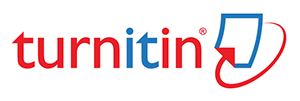ANALISIS DAN IMPLEMENTASI ALGORITMA GENETIKA PADA PENJADWALAN MATA PELAJARAN DI MADRASAH TSANAWIYAH MIFTAHUL ‘ULUM DENPASAR
DOI:
https://doi.org/10.23887/janapati.v8i2.19159Keywords:
Scheduling, lesson, genetic algorithm, optimizationAbstract
Subject scheduling is an important element in teaching and learning activities in schools. Scheduling lessons often take a long time due to many factors such as determining teacher teaching hours allocation, the limited number of teachers and teaching in a large number of classes. The problem that often arises is the clash of teaching hours at the same time. One solution to scheduling problems is through the optimization method of Genetic Algorithms. Genetic Algorithms are methods inspired by Mendell's theory of genetics and evolution to solve problems that require optimization. The constraints that were used as constraints in this study were clashing hours of teaching teachers and clashing the same class at the same time. In this study, the results of implementing Genetic Algorithms as a method of optimizing lesson scheduling have not yet obtained optimal results. The solution with the best fitness value is achieved by the number of chromosomes as many as 20, the number of generations is 200, the probability of crossover (Pc) 0.5 and the probability value of mutation (Pm) is from 0.15 to 0.35. The fastest time for Pm value is 0.15 for 91.22 seconds, while for Pm value of 0.35, it takes 91.65 seconds.
References
Mawaddah NK, Mahmudy WF. Optimasi Penjadwalan Perawat Menggunakan Algoritma Genetika. Univ Brawijaya. 2006;
Desiana E. Performance Algoritma Genetika (GA) Pada Penjadwalan Mata Pelajaran. J Nas Inform dan Teknol Jar. 2016;
Susanto A. Sistem Informasi Manajemen. Bandung: Lingga Jaya; 2007.
García-Martínez C, Rodriguez FJ, Lozano M. Genetic algorithms. In: Handbook of Heuristics. 2018.
Kubat M, Kubat M. The Genetic Algorithm. In: An Introduction to Machine Learning. 2017.
Cao YJ, Wu QH. Teaching Genetic Algorithm Using Matlab. Int J Electr Eng Educ. 2013;
Wati DAR, Rochman YA. Model Penjadwalan Matakuliah Secara Otomatis Berbasis Algoritma Particle Swarm Optimization ( PSO ). J Rekayasa Sist Ind. 2013;
Setemen K. Implementasi Algoritma Genetika Dalam Pengembangan Sistem Aplikasi Penjadwalan Kuliah. J IKA. 2010;
Kralev V. A Genetic and Memetic Algorithm for Solving The University Course Timetable Problem. Int J "Information Theor Appl. 2009;
Kusumadewi S. Artificial Intelligence. Yogyakarta: Graha Ilmu; 2003.
Suyanto. Algoritma Genetika dalam Matlab. Yogyakarta: Penerbit Andi; 2005.
Putra DMDU. Penerapan Algoritma Genetika untuk Menyelesaikan Permasalahan Perawat dengan Fuzzy Fitness Function. 2012;
Martono N. Metode Penelitian Kuantitatif Analisis Isi dan Anlisis Data Sekunder. Ed Revis i2. 2014;
Iswara IBAI, Saputra IGA. Aplikasi Incosys Sebagai Alternatif System Pengaduan Online. J Nas Pendidik Tek Inform. 2017;6(3):316–27.
Wieringa RJ. Data Flow Diagrams. In: Design Methods for Reactive Systems. 2007.
Ibrahim R, Yen SY. Formalization of the Data Flow Diagram Rules for Consistency Check. Int J Softw Eng Appl. 2010;
Mulawarman MF. Sistem Informasi Penjualan Pembelian Dan Persediaan Barang Pada Toko Yunika Berbasis Desktop. Issn. 2015;1(Strata 1).
Sudarmaji S, Prasetyo KA. SISTEM INFORMASI PERKULIAHAN ONLINE PADA FAKULTAS ILMU KOMPUTER UNIVERSITAS MUHAMMADIYAH METRO LAMPUNG. J Nas Pendidik Tek Inform [Internet]. 2019 Jun 10 [cited 2019 Jul 29];8(1):12. Available from: https://ejournal.undiksha.ac.id/index.php/janapati/article/view/14010
Downloads
Published
How to Cite
Issue
Section
License
Authors who publish with Janapati agree to the following terms:- Authors retain copyright and grant the journal the right of first publication with the work simultaneously licensed under a Creative Commons Attribution License (CC BY-SA 4.0) that allows others to share the work with an acknowledgment of the work's authorship and initial publication in this journal
- Authors are able to enter into separate, additional contractual arrangements for the non-exclusive distribution of the journal's published version of the work (e.g., post it to an institutional repository or publish it in a book), with an acknowledgment of its initial publication in this journal.
- Authors are permitted and encouraged to post their work online (e.g., in institutional repositories or on their website) prior to and during the submission process, as it can lead to productive exchanges, as well as earlier and greater citation of published work. (See The Effect of Open Access)






